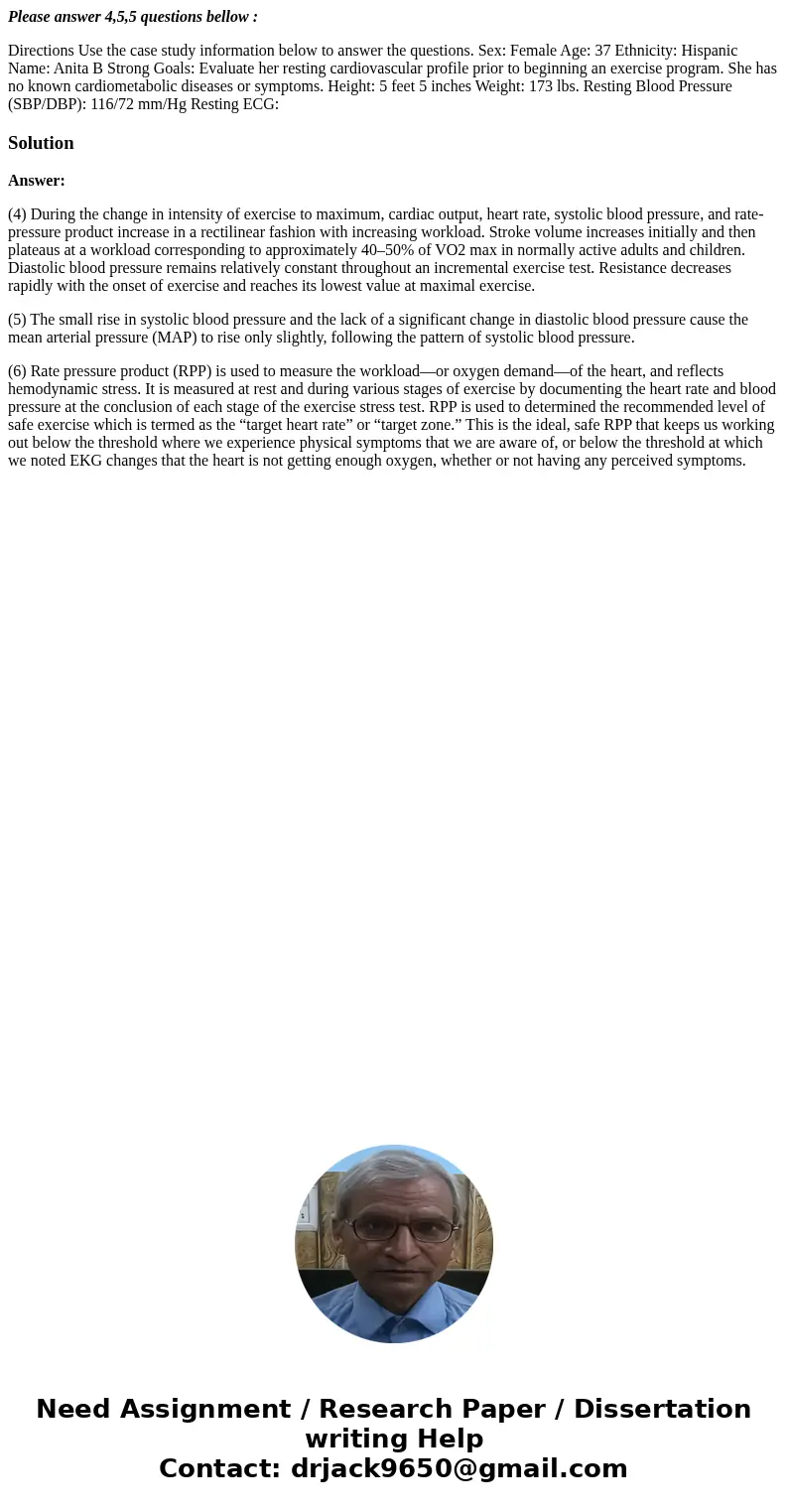Please answer 455 questions bellow Directions Use the case
Please answer 4,5,5 questions bellow :
Directions Use the case study information below to answer the questions. Sex: Female Age: 37 Ethnicity: Hispanic Name: Anita B Strong Goals: Evaluate her resting cardiovascular profile prior to beginning an exercise program. She has no known cardiometabolic diseases or symptoms. Height: 5 feet 5 inches Weight: 173 lbs. Resting Blood Pressure (SBP/DBP): 116/72 mm/Hg Resting ECG:Solution
Answer:
(4) During the change in intensity of exercise to maximum, cardiac output, heart rate, systolic blood pressure, and rate-pressure product increase in a rectilinear fashion with increasing workload. Stroke volume increases initially and then plateaus at a workload corresponding to approximately 40–50% of VO2 max in normally active adults and children. Diastolic blood pressure remains relatively constant throughout an incremental exercise test. Resistance decreases rapidly with the onset of exercise and reaches its lowest value at maximal exercise.
(5) The small rise in systolic blood pressure and the lack of a significant change in diastolic blood pressure cause the mean arterial pressure (MAP) to rise only slightly, following the pattern of systolic blood pressure.
(6) Rate pressure product (RPP) is used to measure the workload—or oxygen demand—of the heart, and reflects hemodynamic stress. It is measured at rest and during various stages of exercise by documenting the heart rate and blood pressure at the conclusion of each stage of the exercise stress test. RPP is used to determined the recommended level of safe exercise which is termed as the “target heart rate” or “target zone.” This is the ideal, safe RPP that keeps us working out below the threshold where we experience physical symptoms that we are aware of, or below the threshold at which we noted EKG changes that the heart is not getting enough oxygen, whether or not having any perceived symptoms.

 Homework Sourse
Homework Sourse